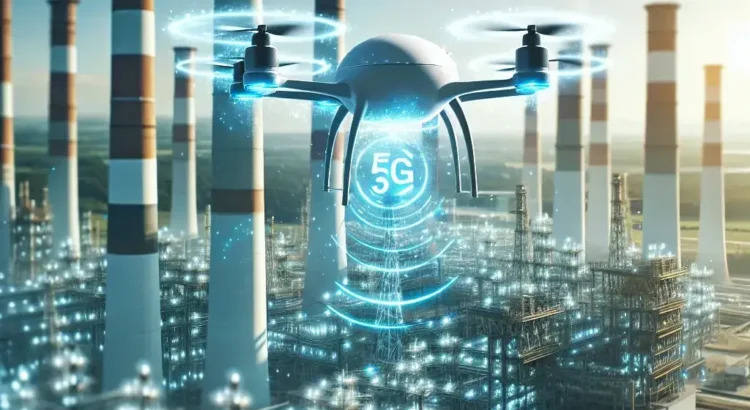Introduction
In an era where efficiency and safety are paramount, AT&T has launched a groundbreaking 5G-powered drone inspection service tailored specifically for utility companies. This cutting-edge service promises to transform how utility infrastructure is monitored and maintained, providing companies with enhanced capabilities to ensure optimal performance and safety.
Understanding the Need for Drone Inspections
Utility companies are responsible for maintaining vast networks of infrastructure, including power lines, pipelines, and telecommunications. Traditional inspection methods often involve manual labor, which can be time-consuming, costly, and dangerous. The advent of drone technology has introduced a more efficient and safer alternative for inspections.
The Role of 5G Technology
AT&T’s deployment of 5G technology is a game-changer, offering unprecedented speed and connectivity. This technology allows drones to transmit high-definition video and data in real-time, enabling utility companies to make informed decisions quickly. The low latency of 5G ensures that operators can monitor drone feeds without delays, addressing potential issues before they escalate.
How AT&T’s Drone Inspection Service Works
The 5G-powered drone inspection service integrates advanced technologies to deliver comprehensive inspections of utility assets.
1. Deployment of Drones
Drones are deployed to inspect various utility assets, flying over power lines, solar farms, wind turbines, and other critical infrastructure. Equipped with high-resolution cameras and sensors, these drones capture detailed images and data.
2. Real-Time Data Transmission
Utilizing AT&T’s robust 5G network, the drones transmit real-time data back to control centers. This real-time capability allows operators to assess conditions on the ground without the need to physically inspect every location.
3. Data Analysis and Reporting
Data collected by the drones is analyzed using advanced software that can identify potential issues such as wear and tear, vegetation encroachment, or structural deformities. Reports are generated quickly, allowing utility companies to prioritize maintenance and repairs.
Benefits of the 5G-Powered Drone Inspection Service
Enhanced Safety
One of the most significant advantages of drone inspections is the improved safety for workers. Dangerous inspections that previously required climbing poles or towers can now be done remotely.
Increased Efficiency
Drones can cover large areas in a fraction of the time it would take human inspectors. This efficiency translates to lower labor costs and faster turnaround times for maintenance and repairs.
Cost Savings
By reducing the need for manual inspections and optimizing maintenance schedules based on real-time data, utility companies can save significant amounts of money in operational costs.
Improved Data Accuracy
Drones provide high-resolution images and precise data, leading to more accurate assessments of utility infrastructure. This accuracy can help prevent costly outages and improve service reliability.
Real-World Applications
Several utility companies have already begun to leverage AT&T’s 5G-powered drone inspection service, seeing substantial benefits.
Case Study 1: Power Line Inspections
A major utility provider in California implemented the drone inspection service to monitor its extensive network of power lines. By utilizing drones, the company reduced inspection time by 70%, allowing them to focus resources on more pressing maintenance needs.
Case Study 2: Pipeline Monitoring
In Texas, a natural gas company adopted AT&T’s drone service to inspect pipelines and detect leaks. The real-time data transmission enabled rapid response times, resulting in a marked decrease in environmental hazards and increased safety compliance.
Challenges and Considerations
While the benefits of drone inspections are evident, some challenges must be addressed.
Regulatory Compliance
Utility companies must navigate complex regulations surrounding drone operations. Ensuring compliance with Federal Aviation Administration (FAA) guidelines is critical to the successful deployment of drone technology.
Data Privacy
With the collection of data comes the responsibility to protect it. Utility companies must implement robust cybersecurity measures to safeguard sensitive information captured during inspections.
Operational Integration
Integrating drone technology into existing operational frameworks requires planning and investment in training for personnel. Ensuring that teams are proficient in utilizing drone data is essential for maximizing the service’s benefits.
The Future of Drone Inspections in Utility Companies
As technology continues to evolve, the future of drone inspections looks promising. With the integration of artificial intelligence and machine learning, drones could soon autonomously perform inspections, analyze data, and even conduct basic maintenance tasks.
Potential Innovations
- Autonomous Flight: Future drones may operate without human intervention, further increasing efficiency.
- AI-Powered Analytics: Utilizing AI to predict maintenance needs based on data trends could revolutionize how utilities manage their infrastructure.
- Enhanced Sensor Technology: New sensors could provide even more detailed insights into the condition of assets, leading to proactive maintenance strategies.
Conclusion
AT&T’s launch of a 5G-powered drone inspection service marks a significant advancement in the utility industry. By leveraging cutting-edge technology, utility companies can improve safety, enhance efficiency, reduce costs, and ultimately provide better service to their customers. As the industry embraces these innovations, the future of utility inspections looks bright, paving the way for smarter, safer, and more efficient operations.
